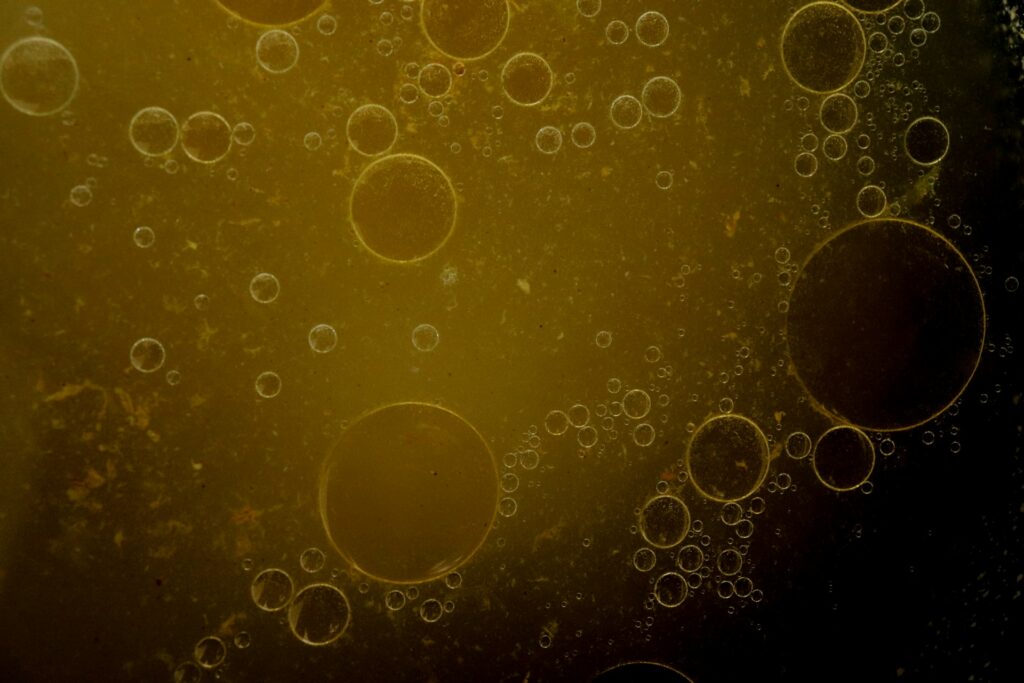When Leiden University researcher Thomas Steenbergen set out to revisit Thomas Young’s classic double-slit experiment, he was less interested in repeating history and more interested in what happens when the same idea is applied to sound at extremely small scales. Steenbergen and his colleagues have now demonstrated the first acoustic version of Young’s experiment using gigahertz-frequency surface sound waves travelling across a semiconductor. Their results reveal not only where sound mirrors the behaviour of light, but also where the comparison breaks down in ways that matter for modern engineering.
Steenbergen, T., Fisicaro, M., Czerniak, K., Rog, M., Lahabi, K., & Löffler, W. (2025). Young’s double-slit experiment with anisotropic GHz surface acoustic waves on gallium arsenide. Optics Letters, 50(20), 6385. https://doi.org/10.1364/OL.573360
The team used surface acoustic waves oscillating at billions of cycles per second and directed them across a piece of gallium arsenide, a semiconductor found in many wireless communication devices. To recreate the “double slits,” two narrow grooves were carved into the material with a focused ion beam. These grooves blocked part of the sound field in the same way that optical slits block light, allowing the researchers to observe how the waves recombined and interfered on the far side.
Leiden University researcher Thomas Steenbergen stated,
“But if you look closely, you also see that the pattern is not completely symmetrical. Sound waves don’t move the same way in all directions. The speed of the waves depends on the angle at which they pass through the material.” By developing a mathematical model, the team was able to explain these differences and predict them accurately.
Measuring this behaviour required a level of precision far beyond what typical acoustic sensors can deliver. The group employed an optical interferometric scanner capable of detecting surface motion at the picometer scale. This allowed the researchers to map the wave height everywhere around and behind the slits, revealing a detailed picture of how the acoustic field evolved as it encountered the obstacles.
As in the optical version of the experiment, Steenbergen’s team observed a clear interference pattern, with alternating regions where the sound waves reinforced or cancelled each other. But unlike the textbook symmetry often shown in optical diagrams, the acoustic pattern was skewed. The spacing and strength of the fringes were not the same on both sides, and the shape of the interference envelope leaned in one direction. The researchers traced this effect to anisotropy within the crystal. In gallium arsenide, the speed of sound depends on the direction in which the wave travels, so the surface acoustic waves do not propagate uniformly. The team developed a mathematical model to describe this behaviour, and the predictions aligned closely with their measurements.
The work illustrates that the simple wave-particle duality narrative of the classic double-slit experiment becomes richer when translated into a real engineering material. For the telecommunications industry, where gigahertz acoustic waves are key components in filters and signal-processing hardware for 5G and other wireless systems, the findings offer insights into how device performance might shift depending on material orientation or crystal structure. By better understanding how these waves behave at the microscale, engineers may be able to design components that operate more efficiently or more predictably under high-frequency loads.
The study also contributes to the emerging field of quantum acoustics, which explores how quantized sound vibrations might be used to store or transmit information. Many proposed devices rely on controlling surface acoustic waves at extremely small amplitudes, often interacting with superconducting circuits or quantum defects. Steenbergen’s measurements and modelling provide a clearer picture of how these waves travel, interfere, and dissipate in solid-state environments, adding experimental grounding to a field that is rapidly expanding.
This acoustic reinterpretation of Young’s centuries-old experiment underscores the value of revisiting foundational ideas with modern tools. By shifting from light in free space to sound in a semiconductor crystal, the Leiden researchers have exposed subtle physical effects that are easy to overlook but vital for next-generation communication hardware and quantum technologies. In doing so, they show that even the most familiar experiments still have more to teach when examined through a new lens.

Adrian graduated with a Masters Degree (1st Class Honours) in Chemical Engineering from Chester University along with Harris. His master’s research aimed to develop a standardadised clean water oxygenation transfer procedure to test bubble diffusers that are currently used in the wastewater industry commercial market. He has also undergone placments in both US and China primarely focused within the R&D department and is an associate member of the Institute of Chemical Engineers (IChemE).



